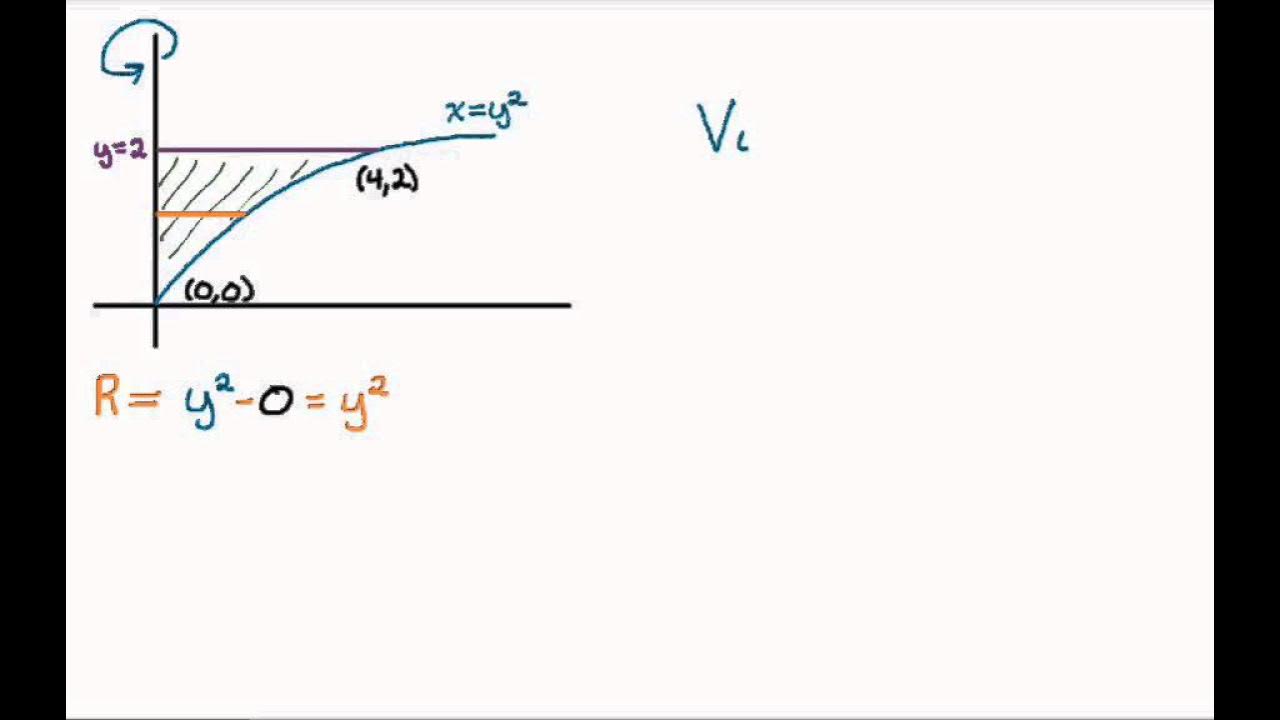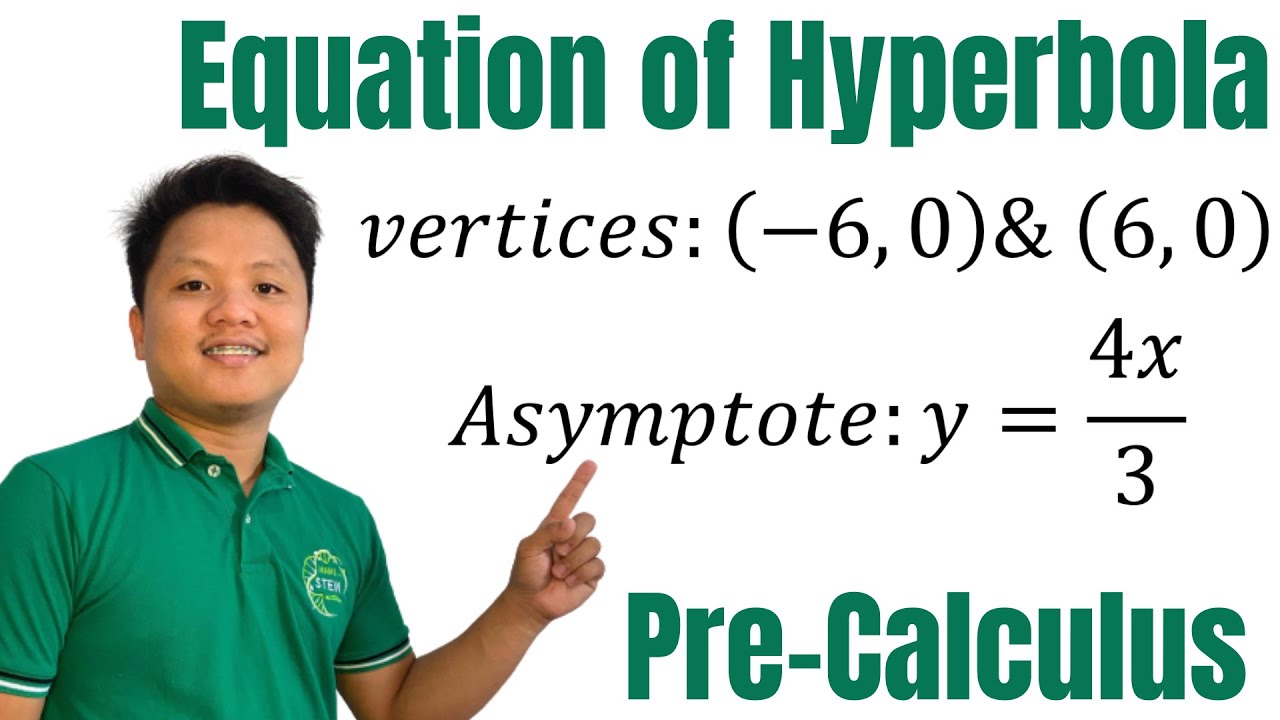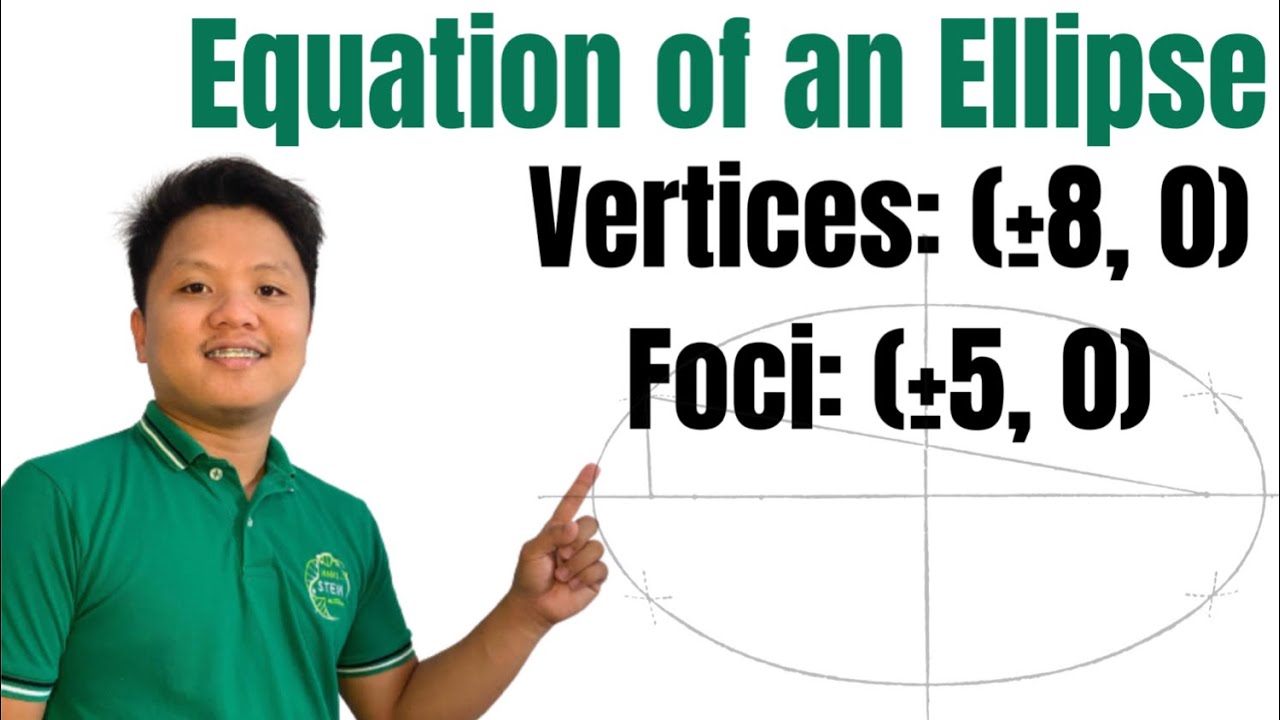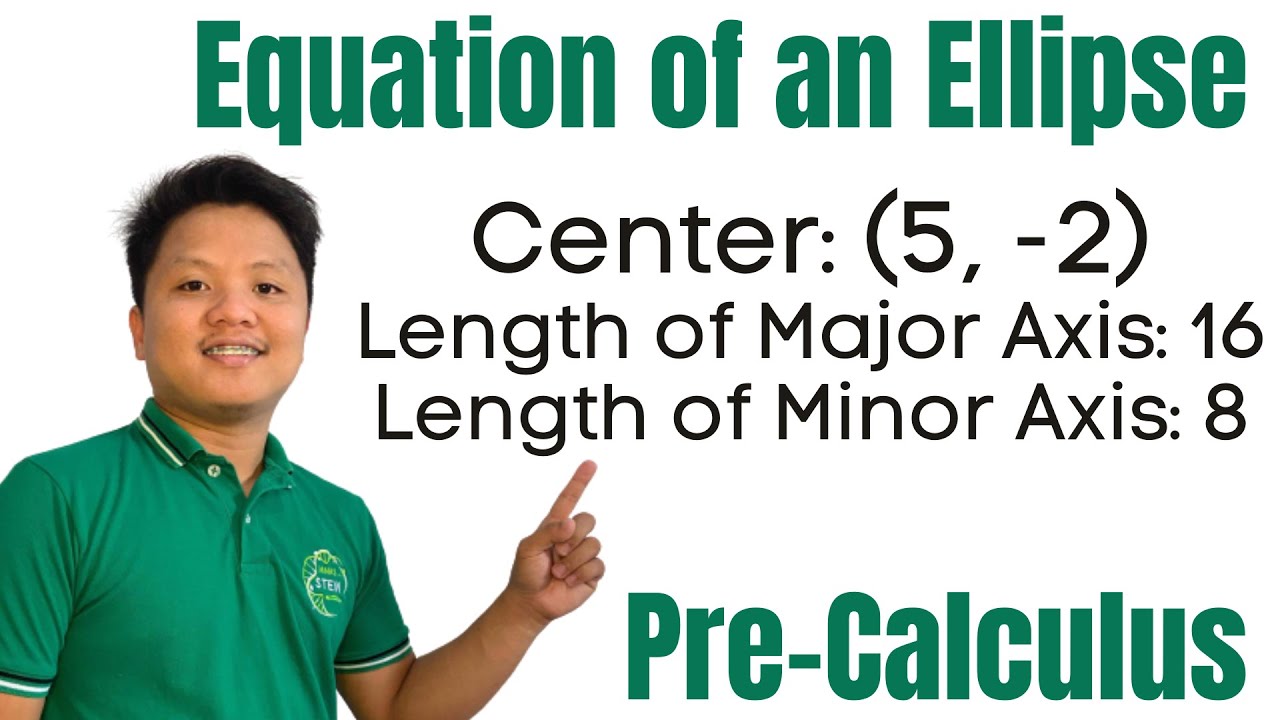STANDARD EQUATION OF PARABOLA TO ITS GENERAL FORM
TLDRIn this educational video, the group delves into transforming the standard equation of a parabola into its general form. They start with the equation x^2 = 2x + 4, manipulating it to x^2 - 2x + 8 = 0, highlighting the vertical axis of symmetry. For letter 'b', they tackle y^2 = (1/3)x - 4, multiplying by 3 to get 3y^2 - x + 4 = 0, illustrating a horizontal axis due to the missing x^2 term. Letter 'c' involves expanding (y-2)^2 to y^2 - 4y + 4 and combining it with 4x + 4 to form y^2 - 4x - 4y + 4 = 0, another horizontal axis example. Lastly, for 'd', they expand (x+4)^2 and rearrange to x^2 + 7x + 18 = 0, showcasing a vertical axis. The lesson concludes with the importance of learning for both success and knowledge, promising more in the next session.
Takeaways
- 📚 The lesson focuses on converting the standard equation of a parabola to its general form, which is a fundamental concept in algebra.
- 🔍 For letter 'a', the process involves multiplying and then adding the additive inverse to transform the equation into the general form: \( x^2 - 2x + 8 = 0 \).
- 📉 The axis of symmetry for the parabola in 'a' is vertical, indicating the parabola opens upwards or downwards.
- 📈 In letter 'b', the equation starts with a fraction, which is eliminated by multiplying both sides by three, leading to the general form: \( 3y^2 - x + 4 = 0 \).
- 📊 The axis of symmetry for the parabola in 'b' is horizontal, as the equation is in the form \( by^2 + cx + dy + e = 0 \) where \( a \) is missing.
- 📐 For letter 'c', expanding the binomial and simplifying terms results in the general form: \( y^2 - 4x - 4y = 0 \).
- 📘 The value of 'b' and 'c' in 'c' are not equal to zero, which means the parabola has a horizontal axis of symmetry.
- 📙 The last equation in the script is expanded and simplified to reach the general form: \( x^2 + 7x + 18 = 0 \).
- 📌 The final equation represents a parabola with a vertical axis of symmetry, as indicated by the presence of \( x^2 \) and non-zero coefficients.
- 🎓 The lesson emphasizes the importance of understanding the general form of a parabola and its axis of symmetry for solving algebraic problems.
- 👋 The instructor concludes by encouraging continuous learning and looking forward to the next lesson.
Q & A
What is the general form of a parabola's equation?
-The general form of a parabola's equation is either ax^2 + bx + c = 0 (for a vertical axis of symmetry) or by^2 + cx + d + ey + f = 0 (for a horizontal axis of symmetry).
How do you convert the equation x^2 = 2x + 4 into the general form?
-First, multiply both sides by 1 to isolate x^2 on one side, resulting in x^2 = 2x + 4. Then, subtract 2x and 4 from both sides to get the equation into the general form, which becomes x^2 - 2x + 8 = 0.
What is the axis of symmetry for a parabola in the form of y^2 = 4x?
-The axis of symmetry for a parabola in the form of y^2 = 4x is vertical, as indicated by the absence of a y term in the general form of the equation.
How do you transform the equation y^2 = (1/3)x - 4 into the general form?
-Multiply both sides by 3 to eliminate the fraction, resulting in 3y^2 = x - 4. Then, move x - 4 to the left side to get the general form, which becomes 3y^2 - x + 4 = 0.
What is the axis of symmetry for the parabola represented by the equation 3y^2 - x + 4 = 0?
-The axis of symmetry for the parabola represented by the equation 3y^2 - x + 4 = 0 is horizontal, as indicated by the presence of both x and y terms in the general form of the equation.
How do you expand the binomial (y - 2)^2?
-Using the FOIL method, you multiply the first terms (y * y), the outer terms (y * -2 and -2 * y), and the inner terms (-2 * -2), resulting in y^2 - 4y + 4.
What is the general form of the equation for the parabola represented by (y - 2)^2 = 4(x + 1)?
-After expanding and simplifying, the general form of the equation is y^2 - 4y + 4 - 4x - 4 = 0, which simplifies to y^2 - 4y - 4x = 0.
What is the axis of symmetry for the parabola represented by the equation y^2 - 4x - 4y = 0?
-The axis of symmetry for the parabola represented by the equation y^2 - 4x - 4y = 0 is horizontal, as indicated by the presence of both x and y terms in the general form of the equation.
How do you convert the equation (x + 4)^2 = x - 2 into the general form?
-First, expand the left side to get x^2 + 8x + 16. Then, set the equation to equal zero by subtracting x - 2 from both sides, resulting in x^2 + 8x + 16 - x + 2 = 0, which simplifies to x^2 + 7x + 18 = 0.
What is the axis of symmetry for the parabola represented by the equation x^2 + 7x + 18 = 0?
-The axis of symmetry for the parabola represented by the equation x^2 + 7x + 18 = 0 is vertical, as indicated by the presence of only x terms in the general form of the equation.
What does the absence of a 'y' term in the general form of a parabola's equation indicate about its axis of symmetry?
-The absence of a 'y' term in the general form of a parabola's equation indicates that the parabola has a vertical axis of symmetry.
What does the presence of both 'x' and 'y' terms in the general form of a parabola's equation indicate about its axis of symmetry?
-The presence of both 'x' and 'y' terms in the general form of a parabola's equation indicates that the parabola has a horizontal axis of symmetry.
Outlines
📘 Introduction and Explanation of Task
The video starts with a greeting and a brief overview of the day's topic: transforming the standard equation of a parabola into its general form. The host outlines the steps for solving various examples.
✏️ Example A: Transforming x² = 2(x + 4)
For the first example, x² = 2(x + 4), the steps include multiplying the right side and moving terms to the left, resulting in x² - 2x + 8 = 0. This form is analyzed for its axis of symmetry.
✏️ Example B: Transforming y² = (1/3)(x - 4)
The second example involves a fraction: y² = (1/3)(x - 4). The solution includes multiplying both sides by 3 and rearranging terms to get 3y² - x + 4 = 0. The resulting equation is discussed for its properties.
✏️ Example C: Transforming (y - 2)² = 4(x + 1)
For the third example, (y - 2)² = 4(x + 1), the binomial expansion and FOIL method are used to derive y² - 4y + 4 - 4x - 4 = 0. The final general form is simplified and analyzed.
✏️ Example D: Transforming (x + 4)² = x - 2
In the final example, (x + 4)² = x - 2, the equation is expanded and terms are transposed to get x² + 7x + 18 = 0. The equation is examined to understand its symmetry and properties.
Mindmap
Keywords
💡General Form
💡Additive Inverse
💡Axis of Symmetry
💡FOIL Method
💡Binomial Expansion
💡Transpose
💡Vertical Parabola
💡Horizontal Parabola
💡Square of Binomial
💡Quadratic Equation
Highlights
Introduction to the task of converting the standard equation of a parabola to its general form.
Method for converting equation a: x^2 = 2x + 4 to general form by multiplying and applying additive inverse.
Explanation of the axis of symmetry being vertical when a and d are not equal to zero.
Process for converting equation b: y^2 = (1/3)(x - 4) by multiplying both sides by three.
Transformation of the equation to the general form 3y^2 - x + 4 = 0, illustrating a missing x^2 term.
Identification of the axis of symmetry as horizontal for the given parabola.
Expansion and simplification of equation c: (y - 2)^2 = 4(x + 1) using the FOIL method.
Conversion to the general form y^2 - 4x - 4y = 0, highlighting the presence of both x and y terms.
Discussion on the horizontal axis of symmetry due to non-zero values of b and c.
Expansion of equation d: (x + 4)^2 = x - 2 and transposition to achieve the general form.
Final equation form x^2 + 7x + 18 = 0, demonstrating a general form with a squared term and linear terms.
Clarification that the axis of symmetry is vertical for the final equation due to non-zero a and d values.
Summary of the lesson, emphasizing the importance of learning for both success and knowledge acquisition.
Closing remarks encouraging continued learning and looking forward to the next session.
Transcripts
Browse More Related Video

Graphing Quadratic Functions Using Transformations

Volume of Revolution Examples - Vertical Axis

Find the equation of Hyperbola given vertices and asymptote

Let's Solve An Interesting Differential Equation

How to find the equation of an ellipse given foci and vertices | @ProfD

Find the equation of an ellipse given center, and the length of major and minor axes | @ProfD
5.0 / 5 (0 votes)
Thanks for rating: